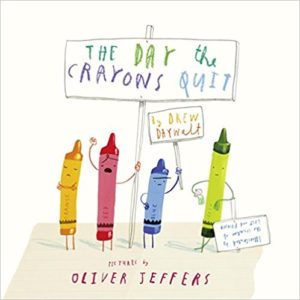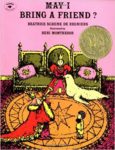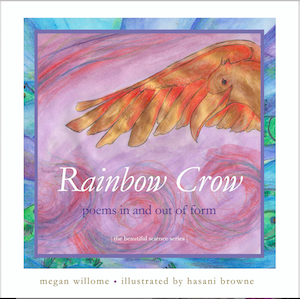You have associations with colors. So do I.
Quick: pink. What pops into your mind?
Maybe a princess. Maybe Pink, the acrobatic singer. I think of Komen for the Cure and its iconic pink ribbons.
What if one day pink, the crayon, decided to quit and left a note in the crayon box, along with notes from all the other crayons? That’s the idea behind this story by Drew Daywalt, illustrated by Oliver Jeffers. Pink crayon complains that Duncan, innocent crayon user, has only used it once all year, calling it a “girls’ color.” Pink suggests, “Could you PLEASE use me sometime to color the occasional PINK DINOSAUR or MONSTER or COWBOY?”
I chose this book because of the illustrator. Jeffers is being honored as we speak at the 7th Annual Children’s Art and Literacy Festival in Abilene, Texas. The National Center for Children’s Illustrated Literature, also in Abilene, is featuring him as this year’s summer artist.
Jeffers grew up in Belfast, Northern Ireland, and now lives in Brooklyn, New York. His book Lost and Found was adapted into an animated short film, which won a BAFTA, the British version of the Oscar. (It’s well worth the $1.99 rental fee on Amazon—tears not included.) This book about the crayons was a New York Times bestseller, but I didn’t know that when I found it at the library. It’s the first book by Drew Daywalt, who has made his living writing for TV and film.
The Day the Crayons Quit doesn’t follow the conventions of most picture books. There’s not even a story, per se. There’s a problem — Duncan finds a stack of letters addressed to him in the box where his crayons should be — and a solution. In between are twelve notes from each of the twelve offended crayons in the twelve-crayon box. Each page has the note on the left side, written from the angry color and examples of how Duncan used the color on the right side. So even as tradition is challenged, there is order.
The tone of the story is a bit snarky, which fits a picture book released fairly recently, in 2013. On the title page and back page are signs from the crayons that read, “We’re not happy,” and “Down with this sort of thing,” and “Booo.” Because Duncan removed the wrapper on Peach, it whines that it’s naked and is too embarrassed to come out of the box. I imagine this page elicits many giggles.
Every crayon has a gripe aimed at Duncan. Both Blue and Red are overworked, but for different reasons. White feels empty and depressed. Black is tired of only outlining things. Yellow and Orange aren’t speaking because each believes it is the proper color for the sun, and each lists instances when Duncan used them for just such a task. Beige, who resents playing second fiddle to Brown, complains that there is almost nothing for a kid to want to color beige, except for maybe wheat, “and let’s be honest—when was the last time you saw a kid excited about coloring wheat?”
To solve the problem, Duncan takes the advice of his crayons because “of course he wanted them to be happy. And that gave him an idea.” He takes Gray’s suggestion and draws baby penguins instead of giant humpback whales. His pony is red instead of brown, an idea which probably came from Beige’s note. There’s a white kitten in a green ocean. And inside a sensibly sized blue boat is a tall pink dinosaur.
We want children to be creative, but what does that look like? The author and illustrator give us clues with their own favorite colors, which are described in their bios on the book jacket. For the author, Daywalt, “His favorite crayon is black, although he makes sure to use all the crayons so that they never quit.” This is a fellow who can imagine a black beach ball and a black rainbow and kids playing on the beach in black swimsuits.
And Jeffers? “His favorite color is striped.” If you think that’s not a color, then check out the last page, which features a striped crayon with fireworks of color exploding out of its tip. The crayon even has two different colors of arms.
The book’s final sentence says, “When Duncan showed his teacher his new picture, she gave him an A for coloring … [turn the page] and an A+ for creativity.” But that’s not the point. We don’t need the teacher, who mysteriously enters at the end of the book, to pass judgment on Duncan’s colorful picture. I wish his art had been the last word. Because creativity doesn’t need a grade.
_______________
The next Children’s Book Club will meet Friday, July 13. We’ll read May I Bring a Friend? by Beatrice Schenk De Regniers, illustrated by Beni Montresor.
Photo by Martyn Fletcher, Creative Commons license via Flickr. Post by Megan Willome, author of The Joy of Poetry.
Browse more Children’s Book Club
“Megan Willome has captured the essence of crow in this delightful children’s collection. Not only do the poems introduce the reader to the unusual habits and nature of this bird, but also different forms of poetry as well.”
—Michelle Ortega, poet and children’s speech pathologist
- Perspective: The Two, The Only: Calvin and Hobbes - December 16, 2022
- Children’s Book Club: A Very Haunted Christmas - December 9, 2022
- By Heart: ‘The night is darkening round me’ by Emily Brontë - December 2, 2022




L.L. Barkat says
I LOVE that last line, Megan. A whole philosophy lives behind it. A great one.
And I really enjoyed your summary of this title. Fun, fun. 🙂
Megan Willome says
Thank you!
I think it’s important to not overlook the fun titles in children’s lit. They are the ones that are always checked out, and they usually have unexpected depth.
Kortney Garrison says
I felt sort of disappointed by this book…maybe because I’d been carrying around the title for so long before I actually read it. I had different expectations. My kids however flipped. They loved this one and immediately started drawing their own versions and iterations! Just goes to show my opinion isn’t the only one at play!
Megan Willome says
Kortney, I’m so glad you brought up this dilemma, which often happens—the parent loves the book and kids are like, meh, or the kids love it and the parent doesn’t.
Tell me, what were your expectations? And what do you think made your kids flip for it?